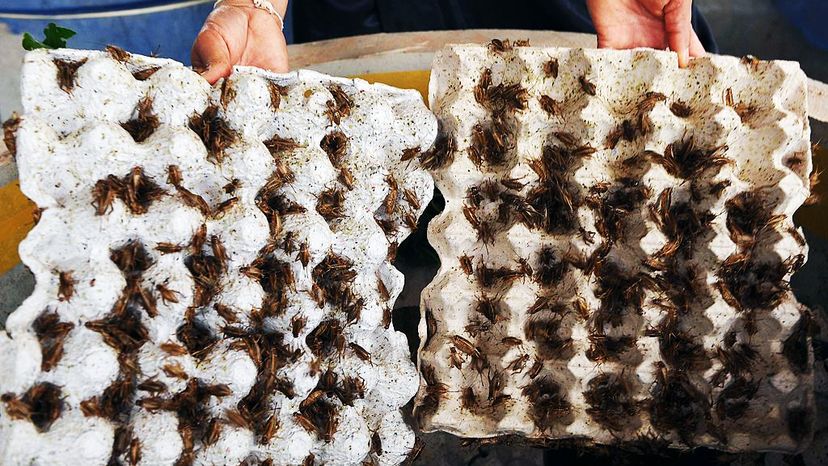Why Cricket Farming?

While the practice of eating insects, otherwise known as entomophagy, is a commonplace convention throughout most of the world, Americans are only just beginning to dabble in bug diets. The major shift came in 2013 when the United Nations released a report titled "Edible insects: Future prospects for food and feed security," which made the case for entomophagy's biggest benefits: nutrient density, and environmental, economic and social sustainability [source: Van Huis].
"That really seemed like the right time, right place and right environmental crisis for this particular solution," cricket farmer Bachhuber says. "It started blowing up pretty quickly after that." According to his TEDxYoungstown talk, the U.N. report was downloaded more than a million times in the first 24 hours it was up, making it the most popular document the U.N. has ever produced.
Advertisement
The report made some compelling arguments. Rich in protein, healthy fats, calcium, iron and zinc, many insects are nutritious alternatives to typical sources of animal protein like chicken, beef, fish and pork. The winged invertebrates (the most diverse group of animals on the planet) aren't just healthy for humans; promoted as food, they're healthy for the environment, too. They emit significantly fewer greenhouse gases than livestock like cattle, and because they're cold-blooded, they're super-efficient at converting feed into protein. Crickets specifically require 12 times less feed than cattle, four times less than sheep, and half as much as chickens and pigs to produce the same amount of protein [source: Van Huis].
"Chickens are the most efficient type of animal protein we raise currently," Bachhuber says, pointing to an April 2017 report published in the Journal of Cleaner Production from Ph.D. student Afton Halloran from the University of Copenhagen. "But even stacked up against broiler chickens, crickets come out ahead, and those aren't even necessarily the most efficient of bugs, so we're doing all right."
According to the U.N. report, harvesting and rearing insects can also boost urban economies, providing low-capital and low-tech investment options for rural communities.